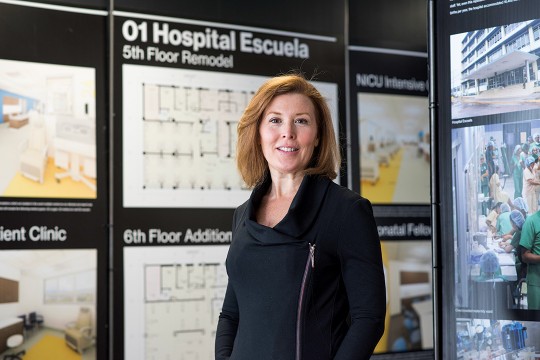News
Department of Biomedical Engineering
-
May 29, 2019

RIT researchers receive NSF award to develop new diagnostic tool for cardiac disease
Researchers at RIT are providing a better map to the human heart. They are developing a critical tool that will help clinicians identify damaged areas in the heart to more accurately diagnose cardiac disease.
-
April 12, 2019

RIT honors researchers
RIT honored researchers who served as principal investigators on active awards in fiscal year 2018 at an April 11 reception. Also recognized were the 20 recipients of Seed Funding Awards and 12 new inductees in RIT’s PI Millionaires.
-
April 4, 2019

Student Spotlight: Device helps children with physical disabilities
Meet Cesar Borges, a fifth-year biomedical engineering student, and Kalie Lazarou, an industrial and systems engineering student, who are part of a team working on the Overcomer, an assistive device that helps children with physical disabilities have a more inclusive playground experience.
-
April 1, 2019

Designing better care for sick newborns
A multidisciplinary contingent of RIT faculty, students and alumni is creating awareness and innovative design solutions to improve the quality of medical care and education for some of the most vulnerable in Central America.
-
April 1, 2019

RIT’s College of Liberal Arts honors students for writing excellence
RIT’s College of Liberal Arts honored student achievement in writing on Friday with the presentation of more than a dozen writing awards for essays varying from sanctuary cities, how democracies can withstand outside meddling, and the excavation, preservation and reconstruction of a London theater where Shakespearian plays debuted.
-
March 6, 2019

RIT faculty-researcher creates 3D-printed platforms to produce bone and tissue replacements
Iris Rivero, an engineering professor at RIT, has found that compatible combinations of polymers and biomaterials can be successfully used to fabricate “scaffolds,” 3D-printed structures that signal the body to begin its own tissue regrowth. This research moves a step closer to the possibility of “smart,” 3D-printed bone, skin and cartilage tissue replacement.
-
March 6, 2019

Toilet seat that detects congestive heart failure getting ready to begin commercialization
With 1 million new cases of congestive heart failure diagnosed each year, a revolutionary product is making it easier for hospitals to monitor patients with the condition in the comfort of their own homes.
-
October 24, 2018

Researchers improve upon stethoscope design
Researchers at RIT and URMC developed a new digital stethoscope that combines precision sensors, electrocardiogram technology and machine learning applications into one piece of equipment to better detect heart ailments and problems that might occur with an implanted heart pump.
-
April 19, 2018

Student Spotlight: BioPrint club helps people and pets
Meet Sean Bellefeuille, a third-year biomedical engineering major and founding president of BioPrint, which explores 3D technologies in the medical field. -
April 5, 2018

Student Spotlight: Smart apparel helps those with autism
Meet James McGee and Kerri Zalba, two members of a student start-up company that uses wearable technology to help children on the autism spectrum. -
November 14, 2017

Multidisciplinary teams apply problem-solving skills during IdeaLab event
Rochester Institute of Technology students and faculty from various disciplines put their creative problem-solving skills to good use earlier this month. Working collaboratively, they examined challenges faced by client organizations and then presented conceptual solutions to them during a two-day event.
-
October 9, 2017

RIT to develop hybrid biological cell separations technology
Research being done at RIT to refine lab-on-chip devices—highly sophisticated laboratories on microchips—will provide more detailed and timely information to detect diseases such as cancer.


